In the arrangement shown in figure pulleys are mass of block A,b and C is m1=5kgm2=4kg and m3=2.5kg respectively .Co-efficient acceleration of friction for both the plane is μ=0.50 Calculate acceleration of which block when system is released from rest
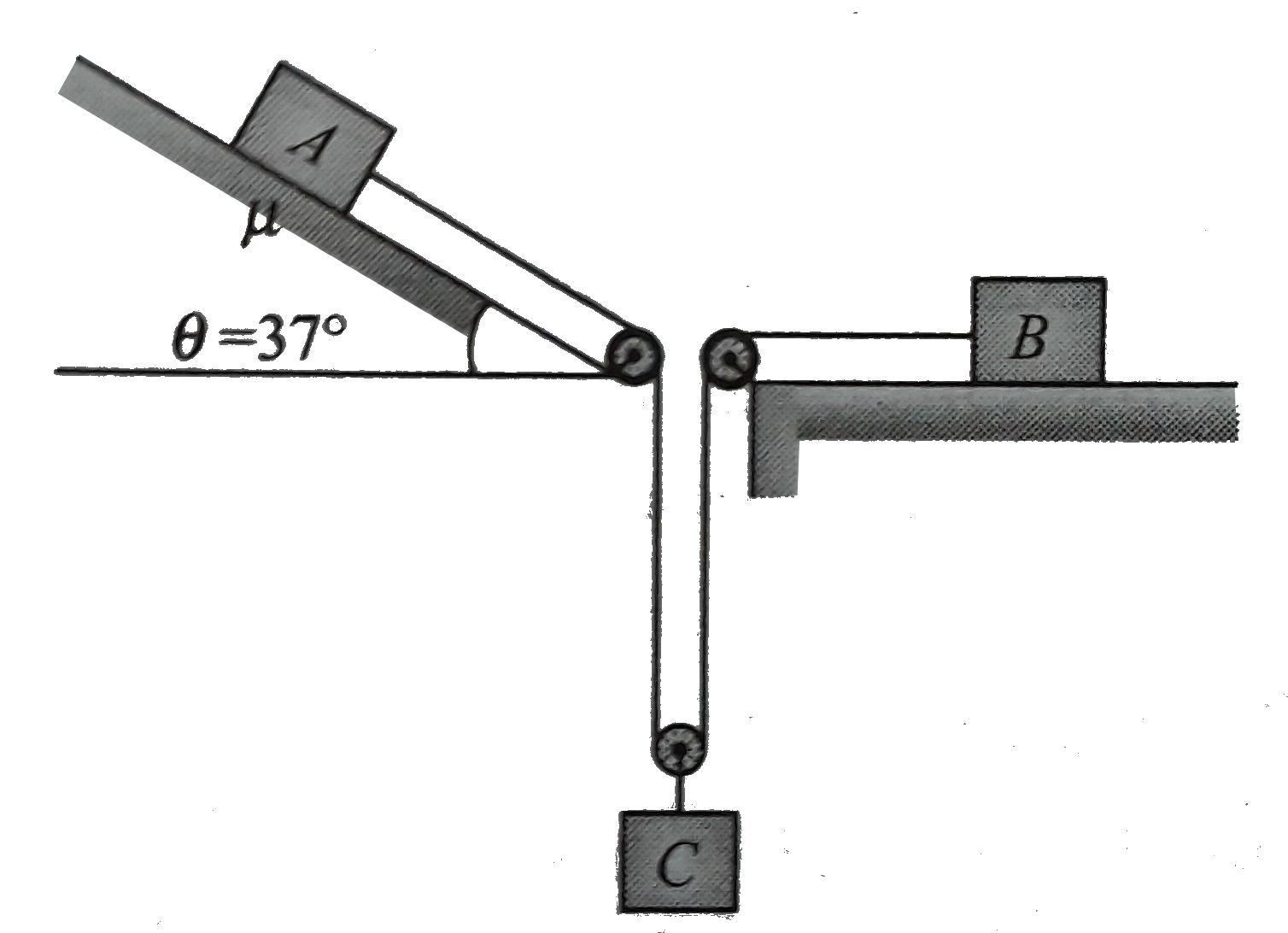
The correct Answer is:a1=4ms−2 b. a2=0 c. a3=2ms−2
When the system is released , block C tries to move vertically downward due to its own weight in the process blocks A and B are pulled by tension in the thread Hence block A tries to move down the plane and block B leftward.
Let the magnitude of acceleration of A and B be a and b respectively along the direction dicassed above . Then acceleration of block C will be (a+b2) downward considering free body diagram
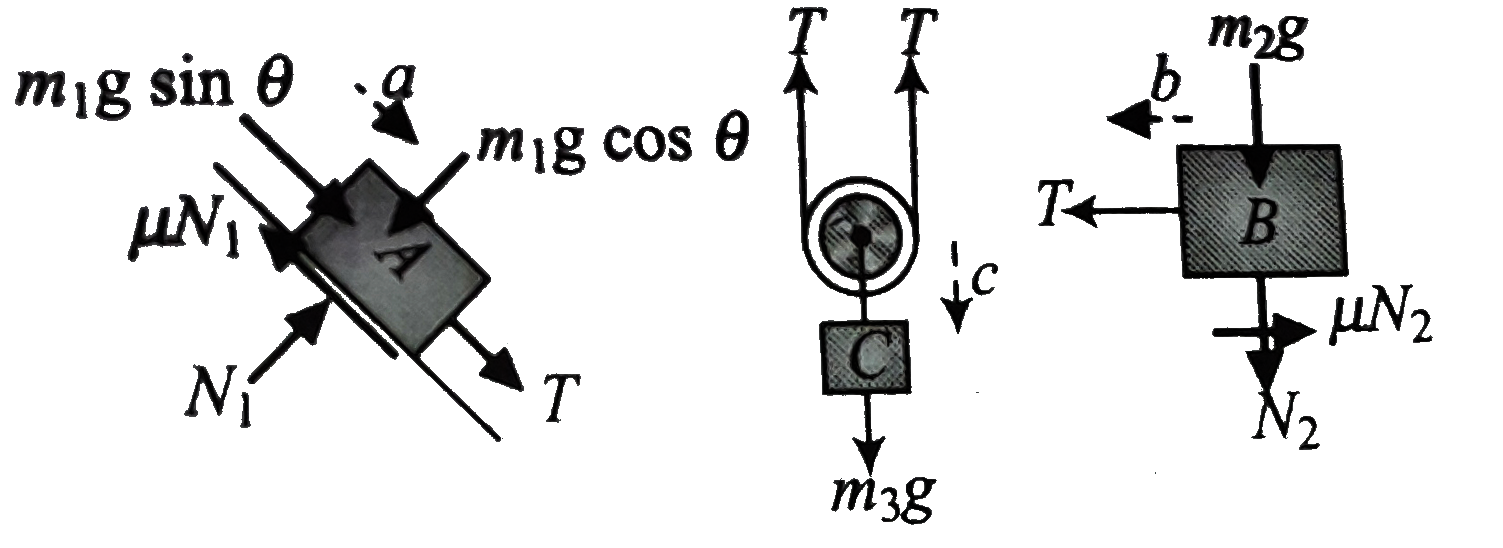
For force on block A N1=m2gcosθ=40N
m2gsinθ+T−μN1=m1aorT−10=5a...(i)
For force on block C
m2g−2T=m3(a+b2)⇒25−2T=1.25(a+b)....(ii)
For force on blockB
N2=m2g=40N
T−μN2=m2bor(T−20)=4b...(iii)
From above three equations
T=46041N,a=17441ms−2 and b=9041ms−2
Negative value of b indicans that block b does not slide along the assumed direction which is leftward from geomery it is clear that B camon move rightward . Therefore the block B remain stationary B is due to the fact tension T in thread is less than the limitiung friction μN2
Hence b=0
Considering free body diagram again
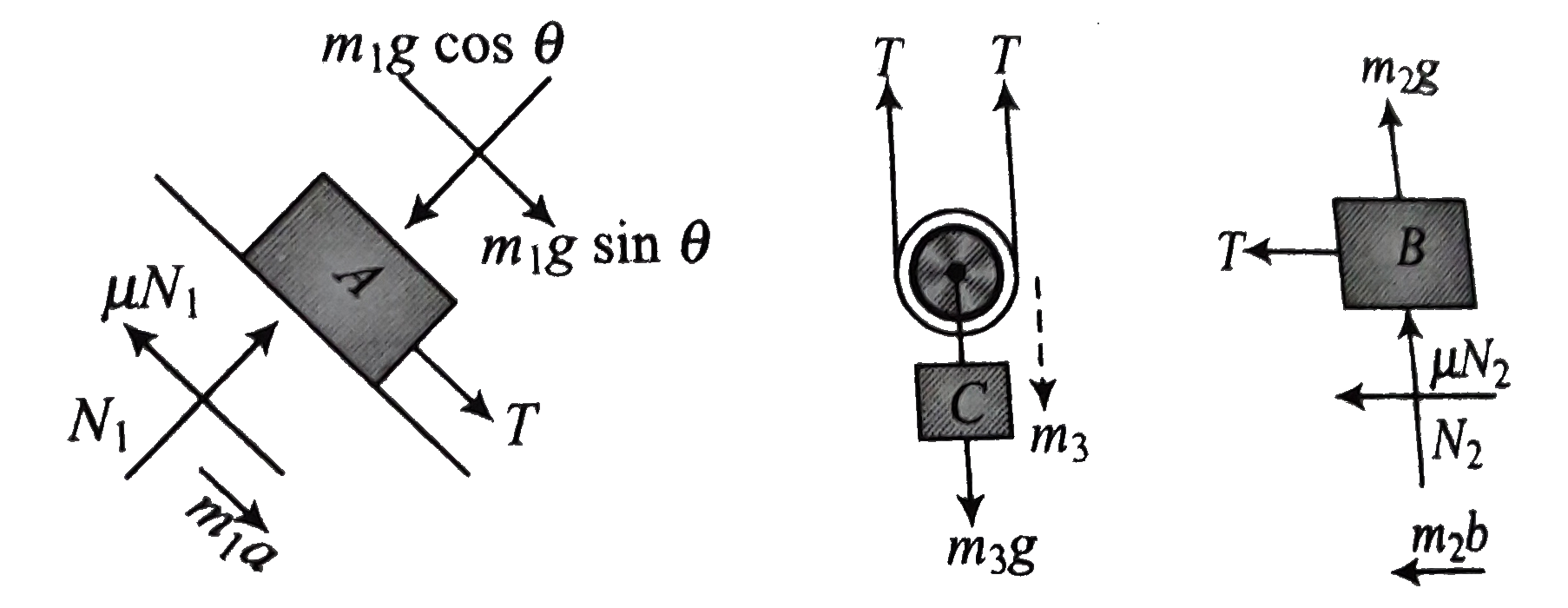
for force on block AN1=m2gcosθ=40 newton
T+m2gsinθ−μN1=m1a
or (T+10)=5a....(iv)
For force on blocks Cm2g−2T=m3(a2)
(25−2T)=1.25a...(vi)
From Eqs (v) and (vi)
T=10Nanda=4ms−2
Acceleration of block Aa1=4ms−2
Acceleration of block Ba2=0
Acceleration of block CBa3=2ms−2
Topper's Solved these Questions
- BOOK - CENGAGE PHYSICS ENGLISHCHAPTER - NEWTON'S LAWS OF MOTION 2EXERCISE - Single Correct87videos
NEWTON'S LAWS OF MOTION 2
- BOOK - CENGAGE PHYSICS ENGLISHCHAPTER - NEWTON'S LAWS OF MOTION 2EXERCISE - Multiple Correct2videos
NEWTON'S LAWS OF MOTION 2
- BOOK - CENGAGE PHYSICS ENGLISHCHAPTER - NEWTON'S LAWS OF MOTION 2EXERCISE - Exercise 7.327videos
NEWTON'S LAWS OF MOTION 2
- BOOK - CENGAGE PHYSICS ENGLISHCHAPTER - NEWTON'S LAWS OF MOTION 1EXERCISE - Integer5videos
NEWTON'S LAWS OF MOTION 1
- BOOK - CENGAGE PHYSICS ENGLISHCHAPTER - PROPERTIES OF SOLIDS AND FLUIDSEXERCISE - INTEGER_TYPE2videos
PROPERTIES OF SOLIDS AND FLUIDS
Similar Questions
In the arrangement shown in figure mass of blocks A,B and C is 18.5kg.8kg and 1.5kg respectively . The bottom surface of A is A is smooth while coefficient of friction that between block A and C is μ1=1/3 between B and floor is μ2=1/5 System is relased from rest r=0 and pulley are light and friction Calculate acceleration of block A ,B and C
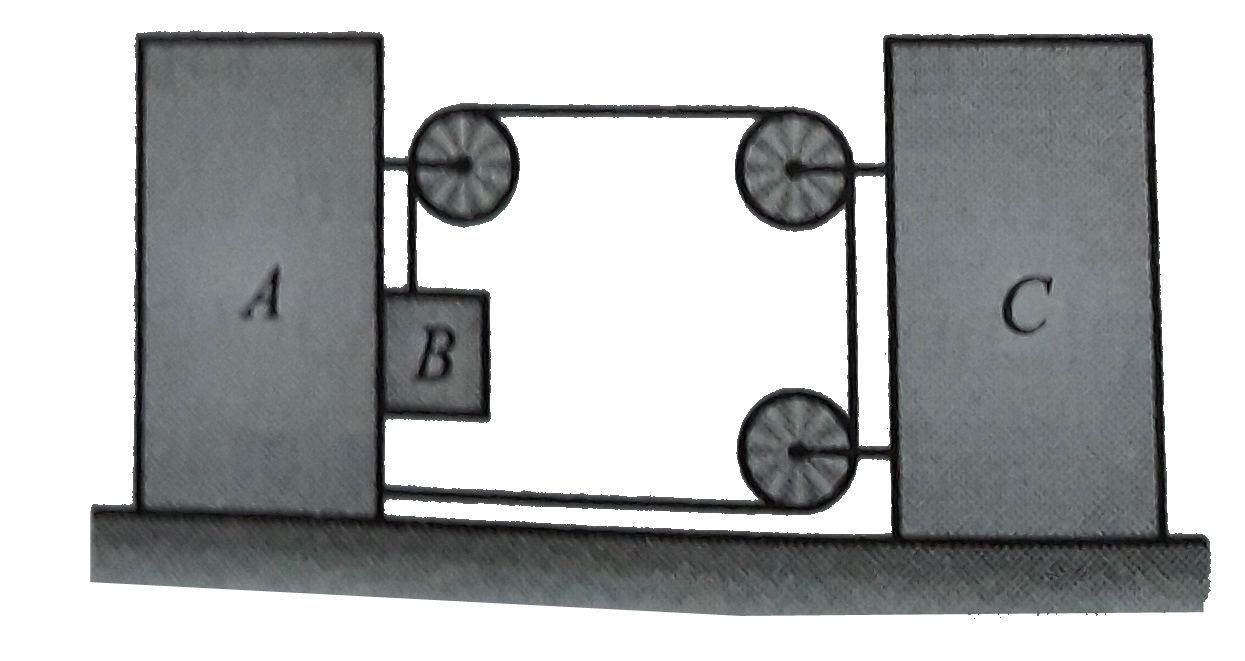 View Solution
View SolutionIn the figure shown, if friction coefficient of block 1 kg and 2kg with inclined plane is μ1=0.5 and μ2=0.4 respectively, then
 View Solution
View SolutionThe acceleration of 3 kg block in the arrangement shown in the diagram ,when the given system is released from rest is
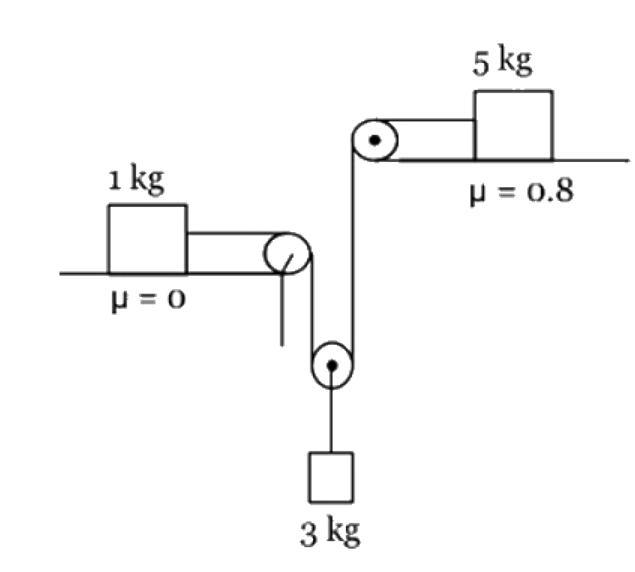 View Solution
View SolutionTwo block A and B are arrenged as shown in figure (mA=5kgandmB=10kg) Find the acceleration of blocks if F=40N
 View Solution
View SolutionTwo blocks A and B of masses 5kg and 2kg respectively connected by a spring of force constant =100Nm−1 are placed on an inclined plane of inclined 30∘ as shown in figure If the system is released from rest
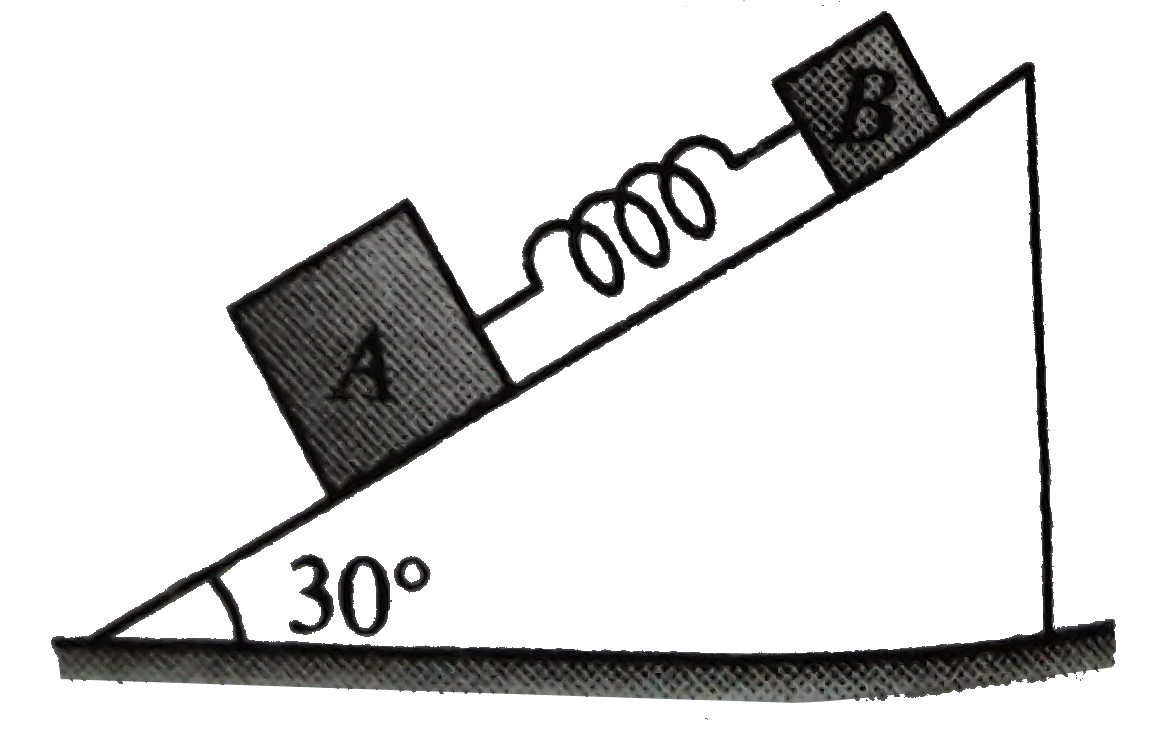 View Solution
View SolutionThree blocks of masses m1=4kg,m2=2kg,m3=4kg are connected with ideal strings passing over a smooth, massless pulley as shown in figure. The acceleration of blocks will be (g=10m/s2)
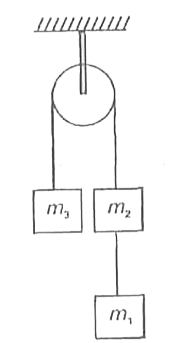 View Solution
View SolutionIn the adjacent figure, masses of A,B and C are 1kg,3kg and 2kg respectively. Find
(a) the acceleration of the system and
(b) tension in the strings.
Neglect friction.(g=10m/s2)
 View Solution
View SolutionIn the arrangement shown in Figure, mA=2kg and mB=1kg. String is light and inextensible. Find the acceleration of centre of mass of both the blocks. Neglect friction everywhere.
 View Solution
View SolutionIn the arrangement shown in Figure, mA=2kg and mB=1kg. String is light and inextensible. Find the acceleration of centre of mass of both the blocks. Neglect friction everywhere.
 View Solution
View SolutionIn the arrangement shown in fig., all pulleys are smooth and massless. When the system is released from the rest, acceleration of block 2 and 3 relative to 1 are 1ms−2 downwards and 5ms−2 downwards, respectively. Acceleration of block 3 relative to 4 is zero.
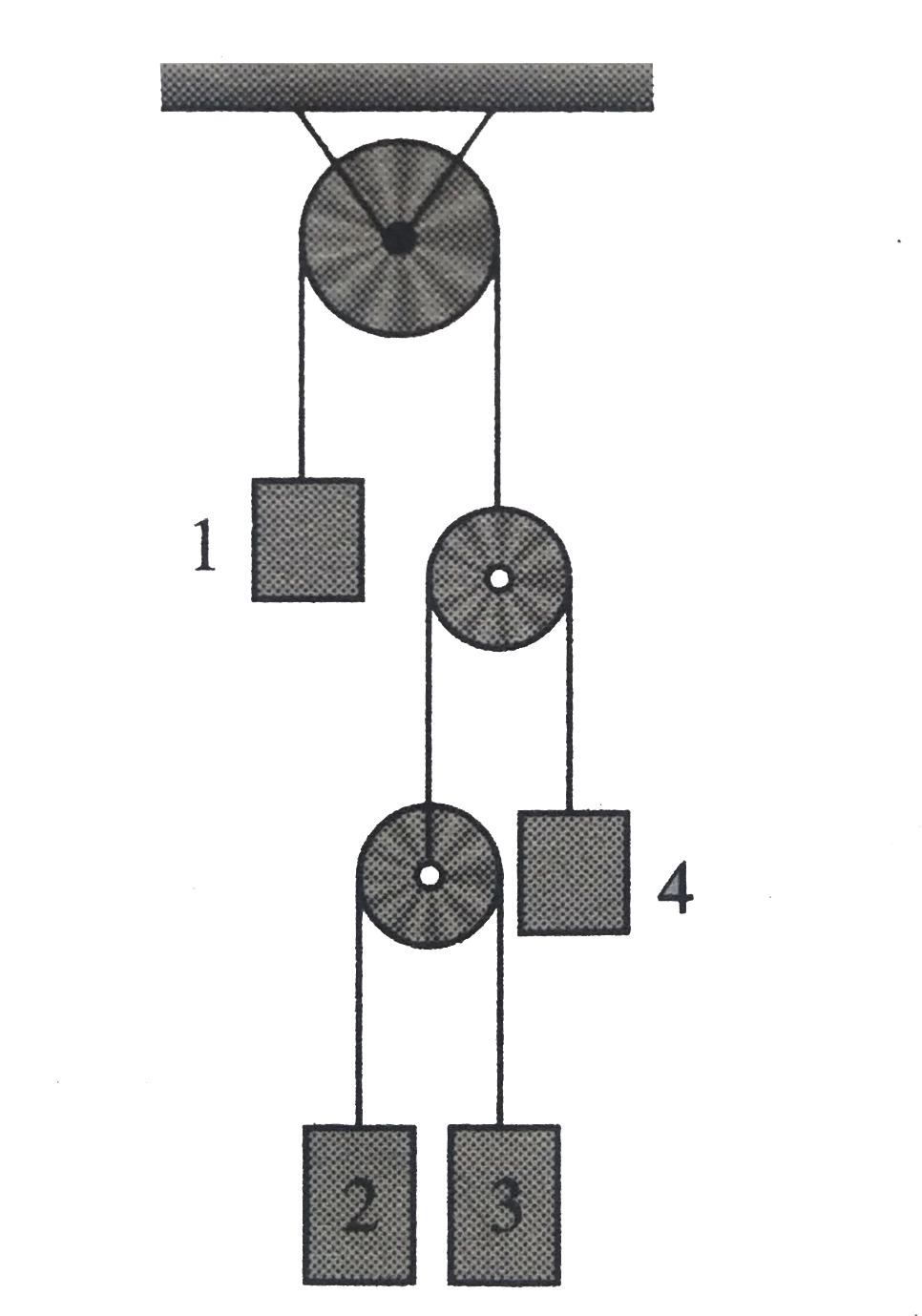
Find the absoulte acceleration of block 4.View Solution

